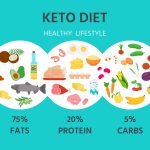Gout, a type of arthritis, is a painful and often debilitating condition caused by the buildup of uric acid crystals in the joints. It can lead to swelling, redness, and severe pain, particularly in the big toe. While medication is a common treatment, one effective way to manage gout and prevent recurrent attacks is by adopting a low purine diet. In this article, we will explore the impact of purines on gout, how a low purine diet can transform your health, provide external links to valuable resources, and answer frequently asked questions to guide you on your journey to a gout-free life.
Understanding Gout and Purines
To comprehend the connection between gout and purines, let’s break down the basics:
Gout: Gout is a type of arthritis caused by the crystallization of uric acid in the joints. This can lead to painful inflammation, particularly in the big toe. Uric acid is a natural waste product that forms when your body breaks down purines.
Purines: Purines are natural compounds found in many foods and are also produced by the body. When the body processes purines, it creates uric acid. Excessive uric acid can accumulate and lead to gout attacks.
The Role of a Low Purine Diet
A low purine diet is designed to reduce the intake of foods rich in purines, ultimately lowering uric acid levels in the body. By adhering to this dietary approach, you can prevent gout attacks and improve your overall health.
Foods to Avoid
- High-purine foods: Red meat, organ meats (liver, kidney, etc.), shellfish, and some types of fish (like mackerel and sardines).
- Alcohol: Beer, in particular, is associated with a higher risk of gout.
- Sugary beverages: Excessive consumption of sugary drinks has been linked to gout.
- Processed foods: Foods with high fructose corn syrup and trans fats should be limited.
Foods to Enjoy
- Low-purine foods: Include plenty of vegetables, fruits, low-fat dairy products, and whole grains in your diet.
- Cherries: Some studies suggest that cherries, whether fresh, dried, or in juice form, can help reduce gout attacks.
- Water: Staying well-hydrated helps to flush excess uric acid from your system.
- Coffee: Regular coffee consumption may lower the risk of gout.
External Links
To further enhance your knowledge and gain a deeper understanding of gout and a low purine diet, explore these external resources:
- Arthritis Foundation – Gout Diet
- National Institute of Arthritis and Musculoskeletal and Skin Diseases – Gout
Why an Anti-Inflammatory Diet is the Key to Long-Term Health
FAQs and Tips
Q1: Can a low purine diet completely cure gout?
A1: While a low purine diet can effectively manage gout and reduce the frequency of attacks, it may not completely cure the condition. Medication may still be required in some cases.
Q2: How quickly will I see the results of a low purine diet?
A2: It varies from person to person, but you may start to see improvements in a few weeks. Consistency in following the diet is crucial for long-term success.
Q3: Are all purine-rich foods off-limits on a low purine diet?
A3: Not necessarily. Some high-purine foods can be consumed in moderation. It’s essential to work with a healthcare professional or registered dietitian to create a personalized plan.
Q4: What other lifestyle changes can help manage gout?
A4: Maintaining a healthy weight, staying active, and managing stress can also contribute to gout management.
Q5: Can supplements help manage gout?
A5: Some supplements, such as vitamin C and fish oil, have shown potential in managing gout symptoms. Consult with a healthcare professional before adding supplements to your routine.
Conclusion
A low purine diet is a powerful tool in managing gout and preventing painful attacks. By making informed choices about the foods you consume and adopting a healthier lifestyle, you can transform your health and enjoy a life free from the shackles of gout. With dedication and the guidance of healthcare professionals, you can look forward to a future where gout is no longer a source of pain and discomfort in your life.











